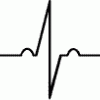http://www.forbes.co...cout606211.html

Selenium causes diabetes?
#1
Posted 10 July 2007 - 12:52 AM
#2
Posted 10 July 2007 - 01:13 AM
#3
Posted 10 July 2007 - 09:07 AM
#4
Posted 10 July 2007 - 03:24 PM
http://www.news.corn...m_diabetes.html
#5
Posted 10 July 2007 - 06:38 PM
Thou hast no right but to do thy Will.
This was a report from the Nutritional Prevention of Cancer Study, the big RCT of selenium vs skin cancer whose initial results were very promising for Se: there was no reduction in skin cancer risk (the primary endpoint), but "Analysis of secondary end points revealed that, compared with controls, patients treated with selenium had a nonsignificant reduction in all-cause mortality (108 deaths in the selenium group and 129 deaths in the control group [RR; 0.83; 95% CI, 0.63-1.08]) and significant reductions in total cancer mortality ..., total cancer incidence ..., and incidences of lung, colorectal, and prostate cancers." (1) Subsequent reports detailed those results, parsing them out for individual cancer sites.
This result led to every damned Se supplement out there containing the 200 mcg dose used in the trial, and is cited everywhere as definitive proof of Se supplementation's ability to reduce cancer incidence & mortality. This was initially a reasonable enough conclusion (tho' it was not properly emphasized that the population was intentionally chosen from an area with unusually low-selenium soils (the Eastern USA), thus making the cohort result dubiously-extrapolable to the population at large (there would be many more frankly deficient people in this group than most places in the industrialized world) -- and even here, according to this new report on diabetes risk (7), "the average dietary selenium intake is 90 mcg/d; this value is low for the United States but is much greater than that required to optimize selenoenzyme activities" -- which is the cutoff on whose basis they set the RDA (of "only" 55 mcg). An accompanying editorial (8) gives more details:
But, of course, supplement industry dogma is that the RDA is too low for almost everything; that, after all, supplements are harmless at worst; and that the NCT proved that 200 mcg of Se was a good dose.The concentration and activity of glutathione peroxidases and other selenoproteins increase with increasing intake of selenium until the dose-response relationship reaches a plateau. With the possible exception of selenoprotein P, this plateau of maximum activity is reached at plasma selenium levels of 70 to 90 ng/mL. At greater levels, additional selenium intake further increases the plasma selenium level because of nonspecific incorporation of selenomethionine into albumin and other proteins rather than increased concentration or activity of glutathione peroxidases (refs). In the United States, dietary intake of selenium is relatively high (80 to 165 mcg/d) (9). Indeed, 99% and 50% of adults have serum selenium levels greater than 95 ng/mL and 124 ng/mL (ref), respectively. In short, the risk for selenium deficiency in the United States is negligible, and the use of selenium supplements in this country is unlikely to increase the antioxidant activity of glutathione peroxidases.(8)
Since then, however, additional analysis has shown this to be a dangerous oversimplification. Subsequent reports from the NPC (1-5) as well as animal studies (eg, (6)) have shown that this dose of Se gives no add'l benefit to some cancers, and may INCREASE the risk of others. These studies find that basically all of the benefits come from correcting frank (sub-RDA) selenium deficiency, with people who already have normal Se intake in their diet getting no benefit for some cancers, and increases in risk for others. The ongoing, unqualified, dogmatic repetition of the cancer claim now constitutes borderline-criminally-negligent oversimplification -- especially when, as when a Certain Supplement Company with which I used to be in a competitive relationship was wont to do, companies cite multiple reports from this SAME STUDY as if they were SEPARATE trials, each independently confirming Se's ability to protect from cancer.
(To understand the significance of these studies' abstracts (1-5,7), you should know that the cutoff separating the bottom from the top 2 tertiles of plasma Se was almost exactly the same level whose acquisition by the population is targeted by the RDA -- ie, the bottom tertile was very likely composed almost entirely of people who started the trial RDA-deficient in Se, and the top 2, almost entirely of people who weren't).
Well, as we've just heard, a new report is just in (7) from the NPC, and found an increased incidence of Type 2 ("non-insulin-dependent" or "adult onset") diabetes in the supplemented group.
The increase in incidence, and the very borderline CI, WOULD make me suspicious of this finding, but the stratified effect in the highest tertile makes it seem more likely.Background: Findings from animal models suggest that selenium supplementation improves glucose metabolism. [Full text: "However, the few clinical trials that have examined the efficacy of antioxidant supplementation in the prevention of type 2 diabetes or its complications have had negative results (refs). Experimental evidence from animal models suggests that supplementation with *low doses* of the antioxidant selenium may exert beneficial effects on glucose metabolism, possibly through many insulin-like actions, and may delay complications of diabetes. The effects of high-dose selenium supplements, however, are less clear (refs)."]
Design: Secondary analysis of a randomized, double-blind, placebo-controlled trial. Setting: Areas of Low selenium consumption of the eastern United States. Patients: 1202 persons seen in dermatology clinics who did not have type 2 diabetes at baseline. Intervention: Oral administration of selenium, 200 mcg/d, or placebo.
Results: During an average follow-up of 7.7 years (SD, 2.7), type 2 diabetes developed in 58 selenium recipients and 39 placebo recipients (incidence, 12.6 cases per 1000 person-years vs. 8.4 cases per 1000 person-years, respectively; hazard ratio, 1.55 [95% CI, 1.03 to 2.33]). ...
An exposure–response gradient was found across tertiles of baseline plasma selenium level [see link above! From the full text: "On the basis of the distribution among the 1202 participants who did not have type 2 diabetes at baseline, we divided baseline plasma selenium levels at the median (<113.4 ng/mL and >113.4 ng/mL) and at tertiles (<105.2 ng/mL, 105.3 to 121.6 ng/mL, and >121.6 ng/mL)." -MR], with a statistically significantly increased risk for type 2 diabetes in the highest tertile of baseline plasma selenium level (hazard ratio, 2.70 [CI, 1.30 to 5.61])...
Conclusions: Selenium supplementation does not seem to prevent type 2 diabetes, and it may increase risk for the disease.(7)
On background and mechanism: "Experimental evidence from in vivo and in vitro studies suggests that selenium may mediate many insulin-like actions, thus enhancing insulin sensitivity (refs). Potential adverse effects on glucose metabolism have been described in animal models of *high-selenium* diets (ref). McClung and colleagues (ref) reported the development of insulin resistance and obesity in mice with elevated expression of glutathione peroxidase 1, which is the most abundant selenoprotein in mammals. Li and associates (ref) found that overexpression of catalase and metallothionein, 2 cytoplasmic antioxidants, accelerated spontaneous diabetes and altered insulin signaling in mice."(7)
"Evidence on potential mechanisms that explain these findings is limited. Selenium is a trace mineral with a narrow therapeutic window and large interindividual variability in metabolic sensitivity (refs). Much has been published on the adverse health effects of long-term exposure to selenium compounds in humans. In particular, the endocrine system ... subclinical hypothyroidism ... growth hormone metabolism ... Data from animal models suggest that high-selenium diets may stimulate the release of glucagon, thus leading to hyperglycemia (ref)."(7)
One possible mechanism on which I am SPECULATING relates to Se's anticancer effect, which may involve its antioxidant properties (as part of GSH-Px and Trx antioxidant enzymes), but also appear to rest on its abiilty to become a positive free-radical CATALYST under stress, enhancing apoptosis. This is protective in cancer, but I can see how overdoing it might tend to be problematic. Beta-cell failure happens late in Type 2 diabetes, tho' for different reasons than in Type I (autoimmune/"juvenile") related to glucose toxicity and mtROS generation in the beta cells: I can see how a few people with stressed beta-cells might wind up losing a bunch prematurely during the preclinical phase (eg, metabolic syndrome X), and convert to frank disease more rapidly.
Use your dietary analysis software, not a guess or an assumption of widespread deficiency, to get the RDA . If you're eating a healthy diet, this should be dead easy: as noted above, in defiance of the old saw that huge swaths of the American population is Se deficient, the report claims that while they quite intentionally set the trial in "Areas of Low selenium consumption of the eastern United States", still even there "the average dietary selenium intake is 90 µg/d; this value is low for the United States but is much greater than that required to optimize selenoenzyme activities" (7) -- which is the RDA (55 mcg).
Do NOT take a standard 200 mcg Se supplement (especially not of selenate or selenite; this study (1-5,7) used high-Se yeast, which is largely selenomethionine), nor a full dose of a multi with this amount.
Love is the law, love under will.
-Michael
References
1: Clark LC, Combs GF Jr, Turnbull BW, Slate EH, Chalker DK, Chow J,
Davis LS, Glover RA, Graham GF, Gross EG, Krongrad A, Lesher JL Jr, Park
HK, Sanders BB Jr, Smith CL, Taylor JR.
Related Articles, Links
Abstract Effects of selenium supplementation for cancer prevention in
patients with carcinoma of the skin. A randomized controlled trial.
Nutritional Prevention of Cancer Study Group.
JAMA. 1996 Dec 25;276(24):1957-63. Erratum in: JAMA 1997 May
21;277(19):1520.
PMID: 8971064 [PubMed - indexed for MEDLINE]
2: Duffield-Lillico AJ, Reid ME, Turnbull BW, Combs GF Jr, Slate EH,
Fischbach LA, Marshall JR, Clark LC.
Related Articles, Links
Free Full Text Baseline characteristics and the effect of selenium
supplementation on cancer incidence in a randomized clinical trial: a
summary report of the Nutritional Prevention of Cancer Trial.
Cancer Epidemiol Biomarkers Prev. 2002 Jul;11(7):630-9.
PMID: 12101110 [PubMed - indexed for MEDLINE]
3: Reid ME, Duffield-Lillico AJ, Garland L, Turnbull BW, Clark LC,
Marshall JR.
Related Articles, Links
Free Full Text Selenium supplementation and lung cancer incidence: an
update of the nutritional prevention of cancer trial.
Cancer Epidemiol Biomarkers Prev. 2002 Nov;11(11):1285-91.
PMID: 12433704 [PubMed - indexed for MEDLINE]
4: Duffield-Lillico AJ, Dalkin BL, Reid ME, Turnbull BW, Slate EH,
Jacobs ET, Marshall JR, Clark LC; Nutritional Prevention of Cancer
Study Group.
Related Articles, Links
Abstract Selenium supplementation, baseline plasma selenium status and
incidence of prostate cancer: an analysis of the complete treatment
period of the Nutritional Prevention of Cancer Trial.
BJU Int. 2003 May;91(7):608-12.
PMID: 12699469 [PubMed - indexed for MEDLINE]
5: Duffield-Lillico AJ, Slate EH, Reid ME, Turnbull BW, Wilkins PA,
Combs GF Jr, Park HK, Gross EG, Graham GF, Stratton MS, Marshall JR,
Clark LC; Nutritional Prevention of Cancer Study Group.
Related Articles, Links
Free Full Text Selenium supplementation and secondary prevention of
nonmelanoma skin cancer in a randomized trial.
J Natl Cancer Inst. 2003 Oct 1;95(19):1477-81.
PMID: 14519754 [PubMed - indexed for MEDLINE]
7. Saverio Stranges, MD, PhD; James R. Marshall, PhD; Raj Natarajan, MS; Richard P. Donahue, PhD; Maurizio Trevisan, MD; Gerald F. Combs, PhD; Francesco P. Cappuccio, MD; Antonio Ceriello, MD; and Mary E. Reid, PhD
Effects of Long-Term Selenium Supplementation on the Incidence of Type 2 Diabetes: A Randomized Trial.
Ann Intern Med. 21 August 2007 | Volume 147 Issue 4
PMID not processed, but may be 17620655
8. Joachim Bleys, MD, MPH; Ana Navas-Acien, MD, PhD; and Eliseo Guallar, MD, DrPH
Ann Intern Med. 21 August 2007 | Volume 147 Issue 4
Selenium and Diabetes: More Bad News for Supplements
Edited by Michael, 10 July 2007 - 07:09 PM.
#6
Posted 11 July 2007 - 12:17 AM
2004 Cornell study titled: "High levels of selenium enzyme could promote diabetes"
http://www.news.corn...m_diabetes.html
Fulltext
This is just great. Not enough H2O2 and you lose insulin sensitivity. Too much H2O2 and you can't activate SIRT1. I give up.
Cell Physiol Biochem. 2007;20(1-4):45-54.
H2O2 accelerates cellular senescence by accumulation of acetylated p53 via decrease in the function of SIRT1 by NAD+ depletion.
Furukawa A, Tada-Oikawa S, Kawanishi S, Oikawa S.
Department of Environmental and Molecular Medicine, Mie University Graduate School of Medicine, Mie, Japan.
It has been reported that p53 acetylation, which promotes cellular senescence, can be regulated by the NAD(+)-dependent deacetylase SIRT1, the human homolog of yeast Sir2, a protein that modulates lifespan. To clarify the role of SIRT1 in cellular senescence induced by oxidative stress, we treated normal human diploid fibroblast TIG-3 cells with H(2)O(2) and examined DNA cleavage, depletion of intracellular NAD(+), expression of p21, SIRT1, and acetylated p53, cell cycle arrest, and senescence-associated beta-galactosidase (SA-beta-gal) activity. DNA cleavage was observed immediately in TIG-3 cells treated with H(2)O(2), though no cell death was observed. NAD(+) levels in TIG-3 cells treated with H(2)O(2) were also decreased significantly. Pre-incubation with the poly (ADP-ribose) polymerase (PARP) inhibitor resulted in preservation of intracellular NAD(+) levels. The amount of acetylated p53 was increased in TIG-3 cells at 4h after H(2)O(2) treatment, while there was little to no decrease in SIRT1 protein expression. The expression level of p21 was increased at 12h and continued to increase for up to 24h. Additionally, exposure of TIG-3 cells to H(2)O(2) induced cell cycle arrest at 24h and increased SA-beta-gal activity at 48h. This pathway likely plays an important role in the acceleration of cellular senescence by oxidative stress.
PMID: 17595514
#7
Posted 20 November 2016 - 12:37 AM
#8
Posted 20 November 2016 - 02:48 PM
Shit. This one is really bad.
then again, how correlaetd is serum selenium with selenium intake? the 2007 RCT showed most increased risk in those with high baseline serum selenium, so apparently pretty correlated.
https://www.ncbi.nlm...pubmed/27547419
Edited by dosquito, 20 November 2016 - 02:50 PM.
#9
Posted 20 November 2016 - 04:12 PM
There are some great thoughts brought up here. In the interest of balance, I would point out that AD patients tend to be selenium deficient. I presume there is some optimal level (U-shape), like many vitamins/minerals:
Nutritional status of selenium in Alzheimer's disease patients
Studies have shown that various antioxidants are decreased in different age-related degenerative diseases and thus, oxidative stress would have a central role in the pathogenesis of many disorders that involve neuronal degeneration, including Alzheimer's disease (AD). The present study aimed to assess the nutritional status of Se in AD patients and to compare with control subjects with normal cognitive function. The case-control study was carried out on a group of elderly with AD (n 28) and compared with a control group (n 29), both aged between 60 and 89 years. Se intake was evaluated by using a 3-d dietary food record. Se was evaluated in plasma, erythrocytes and nails by using the method of hydride generation atomic absorption spectroscopy. Deficient Se intake was largely observed in the AD group. AD patients showed significantly lower Se levels in plasma, erythrocytes and nails (32.59 microg/l, 43.74 microg/l and 0.302 microg/g) when compared with the control group (50.99 microg/l, 79.16 microg/l and 0.400 microg/g). The results allowed us to suggest that AD has an important relation with Se deficiency.
Cardoso BR, e. (2010). Nutritional status of selenium in Alzheimer's disease patients. - PubMed - NCBI . Ncbi.nlm.nih.gov. Retrieved 20 November 2016, from https://www.ncbi.nlm...pubmed/19948078
Edited by prophets, 20 November 2016 - 04:20 PM.
#10
Posted 20 November 2016 - 09:38 PM
Hmmm, what if you got "need" for higher selenium, for example excessive drinking, or fatty liver, or general problem with bad diet/toxins? would the risk still be present?
#11
Posted 13 August 2017 - 11:15 PM
There are some great thoughts brought up here. In the interest of balance, I would point out that AD patients tend to be selenium deficient. I presume there is some optimal level (U-shape), like many vitamins/minerals:
Cardoso BR, e. (2010). Nutritional status of selenium in Alzheimer's disease patients. - PubMed - NCBI . Ncbi.nlm.nih.gov. Retrieved 20 November 2016, from https://www.ncbi.nlm...pubmed/19948078Nutritional status of selenium in Alzheimer's disease patients
Deficient Se intake was largely observed in the AD group. AD patients showed significantly lower Se levels in plasma, erythrocytes and nails (32.59 microg/l, 43.74 microg/l and 0.302 microg/g) when compared with the control group (50.99 microg/l, 79.16 microg/l and 0.400 microg/g). The results allowed us to suggest that AD has an important relation with Se deficiency.
The problems with this study are that (a) it's in people with existing AD, who often don't eat enough period and whose diets are often poor even granted lack of overall intake; and (b) it was done in Brazil, where selenium deficiency is widespread due to very deficient soils — unlike the US, where as indicated above Se deficiency is vanishingly rare.
#12
Posted 14 August 2017 - 09:11 AM
Michael, can you please comment on this study? https://www.ncbi.nlm...les/PMC3379617/
I am a bit puzzled with its figures which have both U shape and down curves at the same time.
Also are there any means to decrease Se levels other than decrease intake? Or at least some means to mitigate it with something like sulfur intake.
P.S. I found increased insulin sensitivity and fasting glucose levels which are surprising, to say the least as I have a very low BMI and not exactly a couch potato. My selenium levels are probably high as I took 200mcg in LEF Two Per Day for 2+ years and selenium rich diet at the same time.
#13
Posted 14 August 2017 - 11:57 AM
2004 Cornell study titled: "High levels of selenium enzyme could promote diabetes"
http://www.news.corn...m_diabetes.html
Fulltext
This is just great. Not enough H2O2 and you lose insulin sensitivity. Too much H2O2 and you can't activate SIRT1. I give up.
Too much H2O2 causes depletion of NAD+ due to extra activity in DNA repair. So NAD+ precursors would be ideal in this situation.
#14
Posted 16 August 2017 - 08:15 AM
It doesn't matter if it does. Whatever diabetes selenium creates can easily be removed again.
#15
Posted 19 August 2017 - 01:13 AM
I think people are drawing wrong conclusions from the above. Assuming too much selenium increases risk diabetes, that does not necessary mean that the mechanism is via increasing levels of glutathione. If that were true, things that increase glutathione e.g. NAC, acetyl glutathione/liposomal glutathione would also increase risk of diabetes.
Examine.com theorizes (i.e. one theory):
The theorized mechanism of action is that after a certain threshold of selenium intake (past the RDA, nearing the TUL), selenium builds up in pancreatic tissue[34] and exerts oxidative stress on beta-cells that secrete insulin.[35]
Edited by Benko, 19 August 2017 - 01:34 AM.
#16
Posted 19 August 2017 - 07:58 PM
^so it kills pancreatic cells? In this case it obviously seems to not be easily reversible..
#17
Posted 20 August 2017 - 12:58 AM
^so it kills pancreatic cells? In this case it obviously seems to not be easily reversible..
FGF1? It sustains regression of type 2 with just one dose in rats iirc. It's not easy to get though... Is beta cell loss a type 1 or 2 pathology?
Anyways, when I can't find adequately low doses of things, I dilute it in water with citric acid and stick it in dropper bottles, nasal sprayers, or similar.
Se is good for Testosterone which is generally good for blood sugar levels. So the pancreatic ROS build up sounds reasonable.
Edited by YOLF, 20 August 2017 - 01:02 AM.
#18
Posted 20 August 2017 - 02:46 AM
Low Se is associated with CHD & diabetes, and high Se is associated with diabetes. There appears to be an optimum around 110-120 ng/mL.
Mean serum selenium in the US (behind paywall--contains the following info)
[Note: I converted Se umol/L to ng/mL multiplying by the atomic weight of Se 78.96 g/mol. Example 1.58 umol/L x 78.96 g/mol = 124.7 ug/L = 124.7 ng/mL]
5% were below 100.3 ng/mL. The lowest sample was 39.5 ng/mL
5% were above 154 ng/mL. The highest sample was 624 ng/mL.
There was not much variation in the area subgroups examined.
- Northeast 124.7 ng/mL
- Midwest 128.7 ng/mL
- South 120.8 ng/mL
- West 128.7 ng/mL
Supplementing with 206 mcg/day of selenium for 1 year (as selenomethionine from yeast) increased serum selenium by 44.2 ng/mL +/- 10.1 ng/mL.
200 mcg/d of Se + 200 mg/d of CoQ10 gave a very positive outcome in Scandinavia where Se levels are lowest in Europe. Se is needed in the metabolism of CoQ10. If Scandinavian levels were around 80 ng/mL the extra 44 ng/mL would be just about right.
In the US taking 200 mcg/d of Se would on average give a serum level of 124.7 + 44.2 = 168.9 ng/mL which is too high.
It would seem the average person in the US already has a near optimum level of Se and should not add more.
We already have enough Se to support supplementing with 200 mg of CoQ10. Ideally a person should check their level and supplement if and only if needed
#19
Posted 20 August 2017 - 03:21 AM
I think people are drawing wrong conclusions from the above. Assuming too much selenium increases risk diabetes, that does not necessary mean that the mechanism is via increasing levels of glutathione. If that were true, things that increase glutathione e.g. NAC, acetyl glutathione/liposomal glutathione would also increase risk of diabetes.
Examine.com theorizes (i.e. one theory):
The theorized mechanism of action is that after a certain threshold of selenium intake (past the RDA, nearing the TUL), selenium builds up in pancreatic tissue{34} and exerts oxidative stress on beta-cells that secrete insulin.{35}
Don't confuse glutathione (a thiol antioxidant) with glutathione peroxidase (an enzyme that uses GSH as a cofactor). Increasing GSH does not increase GSH-Px activity. Selenium increases levels of the latter, not the former, and levels plateau right around the DRI RDA.
Is beta cell loss a type 1 or 2 pathology?^so it kills pancreatic cells? In this case it obviously seems to not be easily reversible...
It's both: beta-cells are lost in Type I because of an autoimmune attack, and in Type II due to a mixture of burnout in response to incessant demand for high insulin output and production of IAPP amyloid.
Anyways, when I can't find adequately low doses of things, I dilute it in water with citric acid and stick it in dropper bottles, nasal sprayers, or similar.
As RWhigam has already pointed out, if you live in the US it's extremely unlikely that you would need a supplement. And it's easier to find low-dose supplements in the EU than the US and Canada.
#20
Posted 10 November 2017 - 06:48 AM
If the issue is building up in pancreas, then what about Methylselenocystine which does not build up in the body, 1x per 2-3 days?
Edited by dazed1, 10 November 2017 - 06:52 AM.
#21
Posted 10 November 2017 - 06:58 PM
i think its just supplemental selenium, its just not possible to dose too high naturally and who knows how differently natural types work in the body in bond with other bioactives compared to straight forward industrially processed selenium, correct me if i think this the wrong way
2 user(s) are reading this topic
0 members, 2 guests, 0 anonymous users




























































